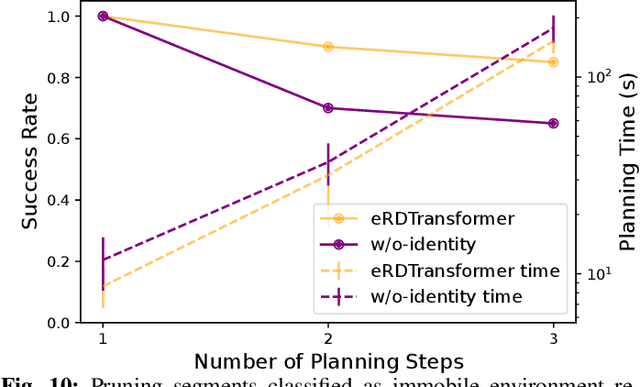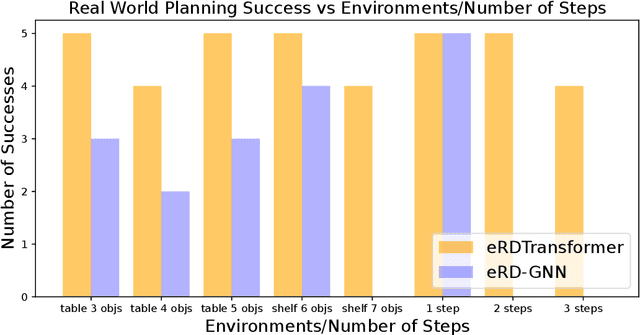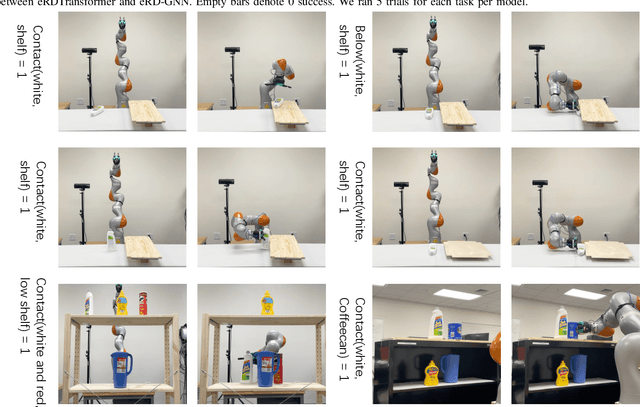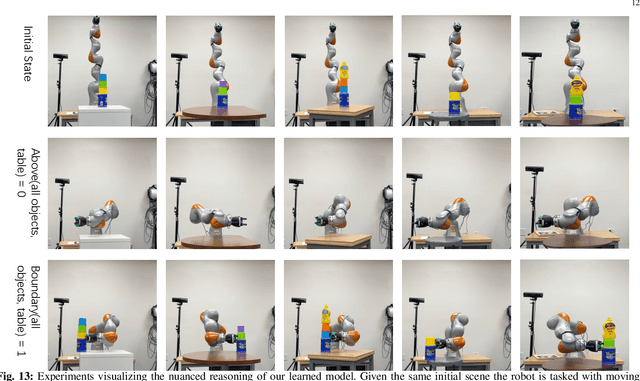Nichols Crawford Taylor
Latent Space Planning for Multi-Object Manipulation with Environment-Aware Relational Classifiers
May 18, 2023



Abstract:Objects rarely sit in isolation in everyday human environments. If we want robots to operate and perform tasks in our human environments, they must understand how the objects they manipulate will interact with structural elements of the environment for all but the simplest of tasks. As such, we'd like our robots to reason about how multiple objects and environmental elements relate to one another and how those relations may change as the robot interacts with the world. We examine the problem of predicting inter-object and object-environment relations between previously unseen objects and novel environments purely from partial-view point clouds. Our approach enables robots to plan and execute sequences to complete multi-object manipulation tasks defined from logical relations. This removes the burden of providing explicit, continuous object states as goals to the robot. We explore several different neural network architectures for this task. We find the best performing model to be a novel transformer-based neural network that both predicts object-environment relations and learns a latent-space dynamics function. We achieve reliable sim-to-real transfer without any fine-tuning. Our experiments show that our model understands how changes in observed environmental geometry relate to semantic relations between objects. We show more videos on our website: https://sites.google.com/view/erelationaldynamics.
Toward a Millimeter-Scale Tendon-Driven Continuum Wrist with Integrated Gripper for Microsurgical Applications
Feb 14, 2023Abstract:Microsurgery is a particularly impactful yet challenging form of surgery. Robot assisted microsurgery has the potential to improve surgical dexterity and enable precise operation on such small scales in ways not previously possible. Intraocular microsurgery is a particularly challenging domain in part due to the lack of dexterity that is achievable with rigid instruments inserted through the eye. In this work, we present a new design for a millimeter-scale, dexterous wrist intended for microsurgery applications. The wrist is created via a state-of-the-art two-photon-polymerization (2PP) microfabrication technique, enabling the wrist to be constructed of flexible material with complex internal geometries and critical features at the micron-scale. The wrist features a square cross section with side length of 1.25 mm and total length of 3.75 mm. The wrist has three tendons routed down its length which, when actuated by small-scale linear actuators, enable bending in any plane. We present an integrated gripper actuated by a fourth tendon routed down the center of the robot. We evaluate the wrist and gripper by characterizing its bend-angle. We achieve more than 90 degrees bending in both axes. We demonstrate out of plane bending as well as the robot's ability to grip while actuated. Our integrated gripper/tendon-driven continuum robot design and meso-scale assembly techniques have the potential to enable small-scale wrists with more dexterity than has been previously demonstrated. Such a wrist could improve surgeon capabilities during teleoperation with the potential to improve patient outcomes in a variety of surgical applications, including intraocular surgery.
 Add to Chrome
Add to Chrome Add to Firefox
Add to Firefox Add to Edge
Add to Edge